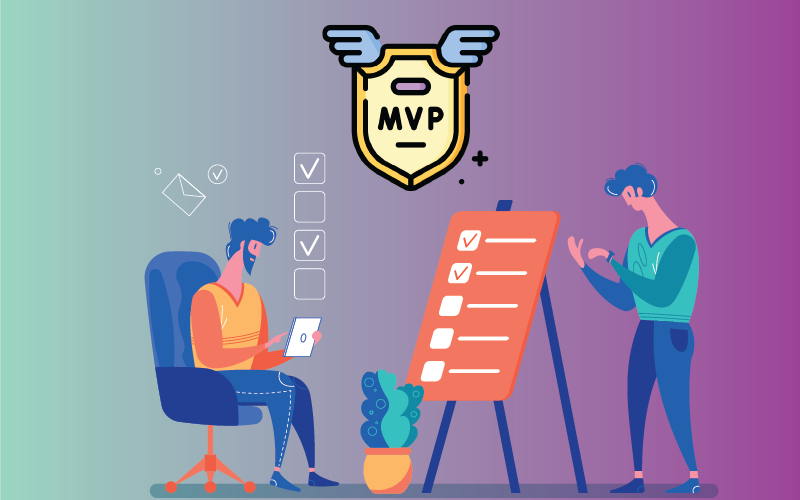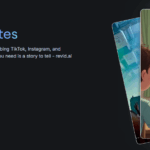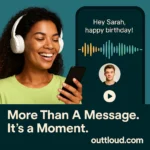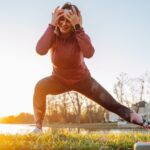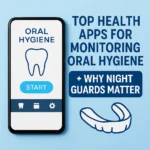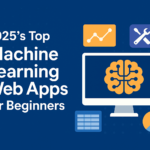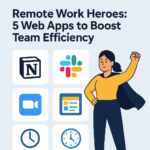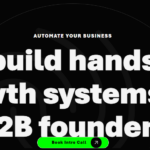This Checklist will adeptly guide you through the process of creating a Minimum Viable Product for your idea. Regardless of whether you’re in the early stages of the process, you can use this to double-check your progress and fill in any gaps you find. It is normal if your MVP journey necessitates taking specific steps in a different order
1. Establish the Business Need
- Determine the market gap and the problem that the product solves.
- Explain why you’re creating this product.
- Determine the success criteria for evaluating product performance.
2. Ensure Team Collaboration
- Determine the development model, preferably Agile.
- Affirm team members’ roles and expectations.
- Clarify the performance indicators for the members.
3. Market Research
- Determine the competition, both existing and potential.
- Examine the competition’s workflow, strengths, weaknesses, and marketing strategies.
- Plan a strategy to set yourself apart.
4. Target Users
- Determine who your product’s users are.
- Create user personas using templates.
- Assure team empathy for user goals, needs, behaviors, etc.
5. Value Addition
- Make “user journeys” to document the user’s steps to complete various tasks.
- Determine the success criteria for these tasks.
- Explain “user stories” by listing their actions and experiences in understandable language
6. Product Backlog
- Create a single reference for all User Journeys and Tasks.
- Add new suggestions/ideas to the list.
- Update the lists in response to customer feedback and competitive analysis.
- Create a supporting documented product vision that includes short and long-term goals.
7. MVP Features
- Prioritize the tasks on the list to build MVP features.
- Determine the bare minimum of critical tasks required for the product to add value.
- Make a list of the user journeys and user stories that describe those critical tasks.
- Ensure you haven’t added any “would be nice to have” tasks to the list.
8. Identify a Development Team
- Choose an experienced team.
- Ascertain that they employ mature, industry-standard processes.
- Assess that they use agile development methodology, preferably in conjunction with DevOps.
- Affirm their knowledge of the necessary technologies.
- To ensure continuity, create a flexible structure with a solid management system.
9. Decide the Tech Stack
- Reach an agreement on the technology stack with the development team.
- Ascertain that the chosen tech stack provides a dependable and cost-effective path to producing the MVP and final product.
10. Confirm the Budget
- Budget for the build and post-launch activities.
- Ensure that the development team signs off on the funds allotted.
11. Validate the Information Architecture (IA)
- Before beginning work, validate your MVP’s IA.
- Ensure that the MVP’s IA includes all selected user stories/journeys.
- Confirm that the architecture is scalable without requiring excessive rework.
12. Utilize Wireframes & Prototypes to Plan
- Wireframes help to structure your user stories and journeys.
- Prototypes enable you to connect them for validation and iterative improvement of critical user journeys using personas and real people.
- Confirm that the interface is consistent, predictable, and accessible (usable by people with varying abilities).
13. Establish the Branding/ Style Guidelines
- Develop a distinct visual identity for your product.
- Make sure that the design team adheres to the branding and style guidelines.
- Integrate the MVP development with the stated branding and style guidelines.
14. Check the Compliance/Security of the Minimum Viable Product
- Determine the compliance requirements.
- Create a product security framework.
- Collaborate with the relevant development team to ensure that the MVP architecture incorporates compliance and security from the start.
15. Stay Involved During Development
- Make sure that the development team provides regular progress reports.
- At each stage of product development, hold discussions and reorientation meetings.
16. Launching Your MVP
- Select your audience or make it available to all.
- Invite/alert your MVP’s early adopters to begin using it.
17. Identifying & Tracking the Product Performance Metrics
- Determine and list relevant metrics for evaluating the MVP [traffic, engagement, active user count, Customer Acquisition Costs (CAC), churn rate, customer satisfaction levels, and so on].
- Keep track of these metrics and keep an eye on them.
18. Taking User Feedback
- Consider collecting customer feedback at the end of critical user journeys.
- Make it simple for customers to provide feedback.
- Compile data into informative reports for further action.
19. Implementing Learning & Test
- Enumerate your Minimum Viable Product in response to user feedback and metrics insights.
- Experiment with the changes to see how they affect the metrics and user feedback.
Final Words
GegoSoft Technologies is also a strategic design & build consultancy that unites creative design thinking with agile software development under one expert roof. To discuss our services, kindly contact [email protected]

